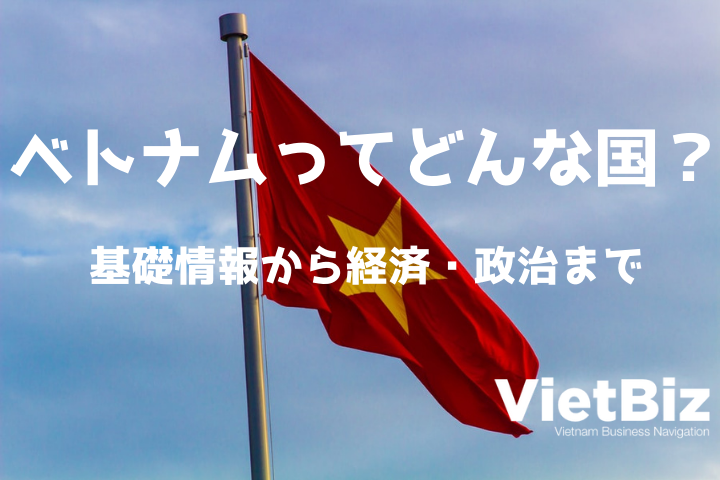Introduction:What Kind of Country is Vietnam?
Vietnam belongs to Southeast Asia and is an emerging country with a growing population and remarkable economic development. Vietnam’s GDP has increased approximately nine-fold in the 20 years since 2000.
The population is growing steadily every year, and a young and abundant labor force and an ever-expanding consumer market are the main attractions of the Vietnamese economy.
Vietnam is said to be geographically and culturally close to Japan and is well known as a so-called pro-Japan country. Many Japanese companies have established operations in Vietnam, and Japanese products are reliable brands for Vietnamese people. The popularity of Japanese anime and manga is also strong, with an increasing number of adult fans as well as children. Additionally, the number of Vietnamese learning Japanese has been increasing in recent years, and Japanese language education was introduced in elementary schools in 2016.
Thus, Vietnam can be positioned as a “pro-Japan country with remarkable economic development. This report introduces the country of Vietnam. We will introduce Vietnam comprehensively, from its population and land area to its culture, politics, and economy.
Population of Vietnam
Vietnam’s population will be approximately 9.851 million in 2021. The population has continued to grow since the postwar baby boom, and some estimates suggest that it will overtake Japan’s population by the 2040s.
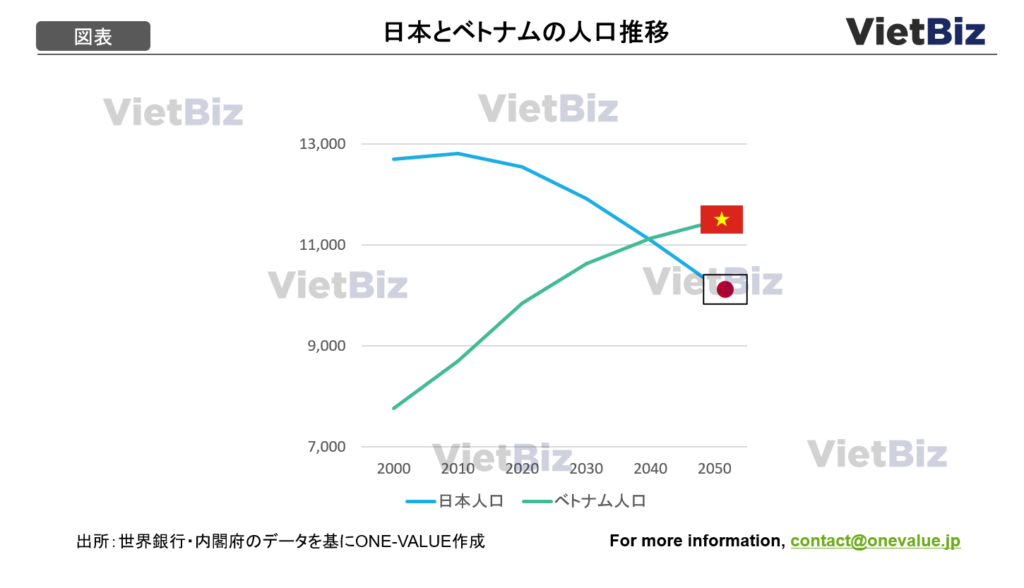
Vietnam Population Composition
The sex ratio in Vietnam will be 50.2% female and 49.8% male in 2021, almost the same and slightly more female.
Of Vietnam’s population, 37.1% live in urban areas in 2021. The remaining 62.9% live in the so-called countryside. Vietnam’s urban population ratio has been increasing every year and increased in 2020, regardless of the Corona disaster; by 2035, the urban population ratio is expected to exceed 50%.
Vietnam’s working population over the age of 15 will reach 50.5 million by 2021.
The average life expectancy in Vietnam is approximately 74 years. Vietnam defines “elderly” as those aged 60 years or older, and it is estimated that 12% of the population is elderly. Vietnam has already reached the level of what is called an “aging society. Although Vietnam’s population is still growing, the aging of the population is one of the social challenges.
Land of Vietnam
The land area of Vietnam is very similar to that of Japan. With an area of approximately 330,000 square kilometers, it is about the size of Japan minus Kyushu. It is also similar to Japan in that it has many mountainous areas and a long coastline.
While Japan is divided into 47 prefectures, Vietnam is divided into 63 provinces and cities: 5 cities directly under the central government and 58 provinces.
Regarding the geographical divisions, this report has categorized them into 10, including two archipelagos. This chapter presents the 10 geographic divisions of Vietnam.

Northeast and Northwest
Northeastern Vietnam is located directly opposite China. Historically, it was a route for the Chinese military invasion, such as during the Sino-Vietnamese War. Today, influenced by the development of trade and economic relations with China, the region has a higher average income than the neighboring Northwest.
Lan Son Province is a major city in the Northeast. Lan Son Province is adjacent to China and is characterized by its well-developed transportation infrastructure. It has roads connecting it to Hanoi, the capital of Vietnam, and international railroads to China, and it thrives on trade with the aforementioned China.
This paragraph also introduces the northwestern region of Vietnam.
Northwest Vietnam is a mountainous region that borders not only China but also Laos. The highest mountain in Vietnam, Mount Phan Xi Phan, is located in Lao Cai Province in the northwest.
The northwestern region is a relatively underdeveloped part of Vietnam, with average incomes only half that of the neighboring Red River Delta region.
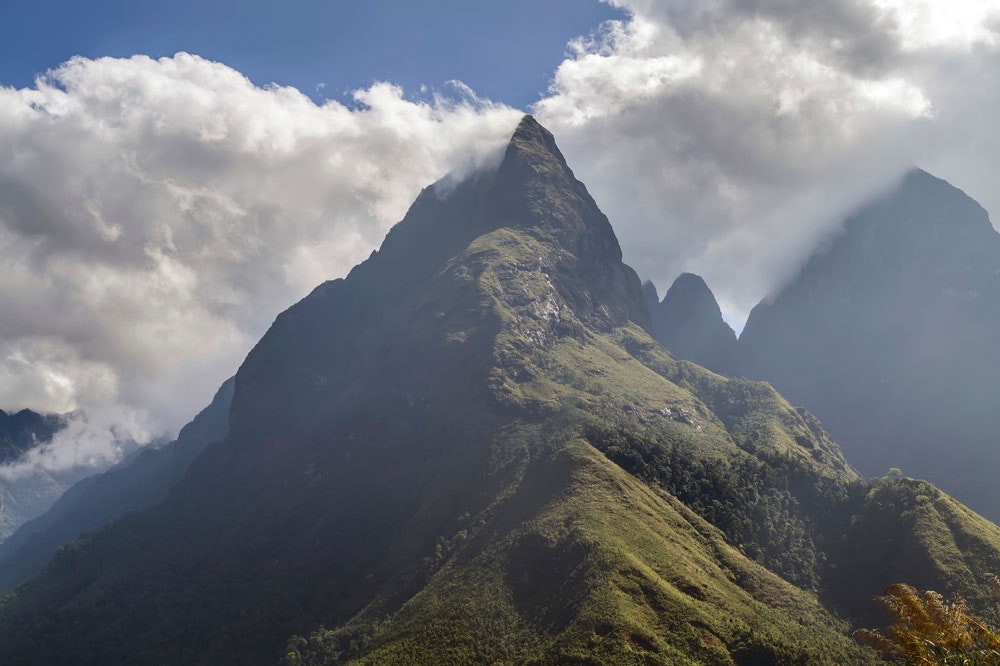
Red River Delta
The Red River Delta region includes two cities directly under the central government, Hanoi, the capital of Vietnam, and Haiphong, one of the largest port cities in Vietnam.
Hanoi is the capital and second largest economic city in Vietnam, with Ho Chi Minh City in the southeast (see below) being the first. Hanoi is often referred to as a cultural and political city, with numerous tourist attractions and government agencies. As a political center, Hanoi has become more popular than Ho Chi Minh City in recent years as a base for foreign-affiliated companies. The Vietnamese government has also declared that Hanoi will be the country’s top economic city, as if it were a capital city.
Haiphong is one of the largest port cities in Vietnam and the third largest economic city in Vietnam after Hanoi and Ho Chi Minh City. As the largest port in the north, Haiphong Port plays an important role in trade, with direct flights to Asian countries.
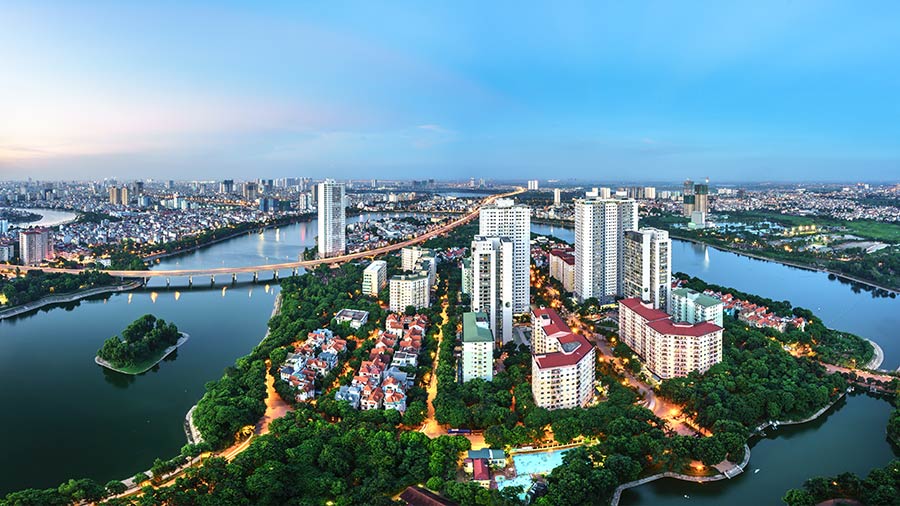
North Central Region
North-central Vietnam is the shortest and narrowest part of Vietnam from east to west. As a result, it has been the boundary of north-south conflict on more than one occasion.
North-central Vietnam also has strong ties with Laos, and overland travel to and from Thailand is easy, but average income is the second lowest in the northwest.
Ho Chi Minh, considered the founding father of Vietnam, was born in the north-central province of Gueang.
Hue, the capital of Thuan Thien-Hue Province in north-central Vietnam, was the capital of the Nguyen Dynasty, the last dynasty in Vietnam. The city is positioned like Kyoto in Japan, and many historical sites remain.
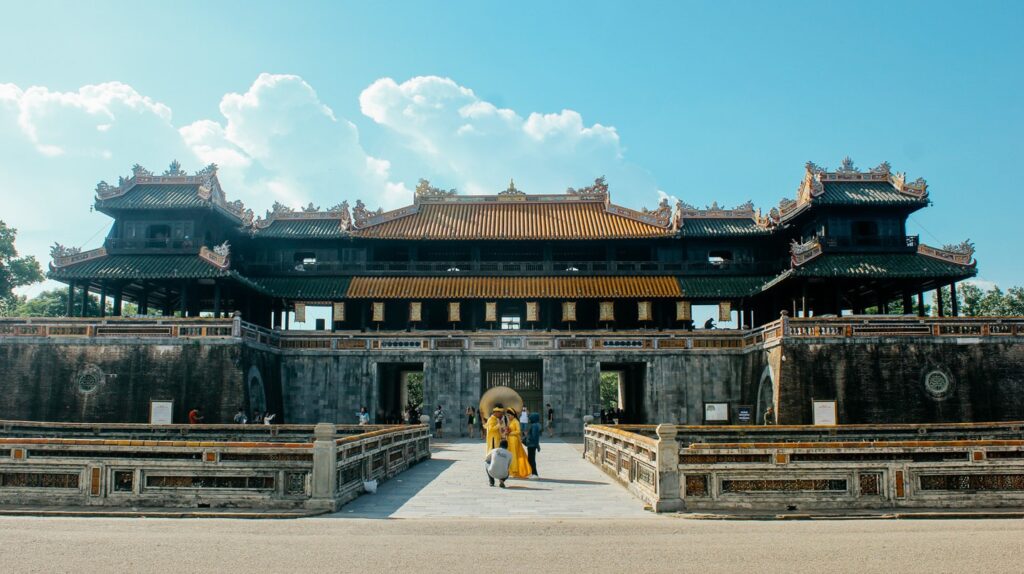
South Central Coastal Region
The South Central Coast region includes the city of Da Nang, the largest city in the central region. It is a transit point between Hanoi, the capital city in the north, and Ho Chi Minh City, the largest city in Vietnam, in the south. In addition, the city has a large port and an international airport, and can be said to be a hub for the flow of people and logistics in and out of Vietnam.
In addition, wind power generation is popular in Vietnam, and Ninh Thuan and Binh Thuan provinces, which belong to the south-central coastal region, have particularly good wind conditions and power supply development is concentrated in these provinces.
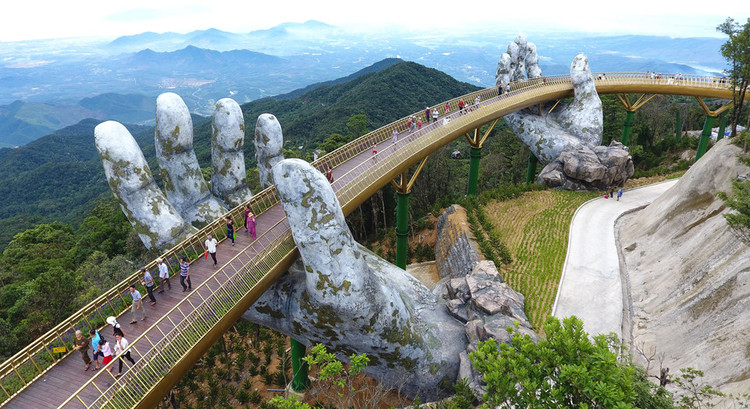
South Central Highlands Region
The South Central Highlands region borders Laos and Cambodia. Vietnam is the world’s second largest producer of coffee, and most of it is produced in this South Central Highlands region. The top three coffee-producing provinces in Vietnam are Daklak, Lam Dong, and Dak Nong, all of which belong to the South Central Highlands region. These three provinces produce many other agricultural products in addition to coffee.
As a mountain plateau region, it is richer than the aforementioned Northeast and Northwest regions.
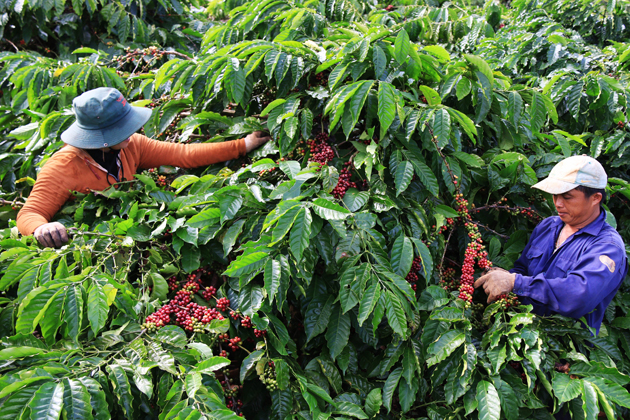
Southeast
In the southeast is Ho Chi Minh City, the largest economic city in Vietnam. It also has the largest population. Saigon” is the old name of the city, but the current Ho Chi Minh City is a combination of the old Saigon and Za Dinh districts, so the old Saigon district, the center of the city, is still called Saigon today.
Ho Chi Minh City’s GDP is equivalent to one-third of Vietnam’s total, and it has a high domestic share of all industries. It is also one of the leading world cities in Southeast Asia, where many foreign companies are based.
Besides Ho Chi Minh City, surrounding provinces such as Binh Duong, Dong Nai, and Ba Ria-Vung Tau have also developed economies, making the Southeast the richest region in Vietnam.
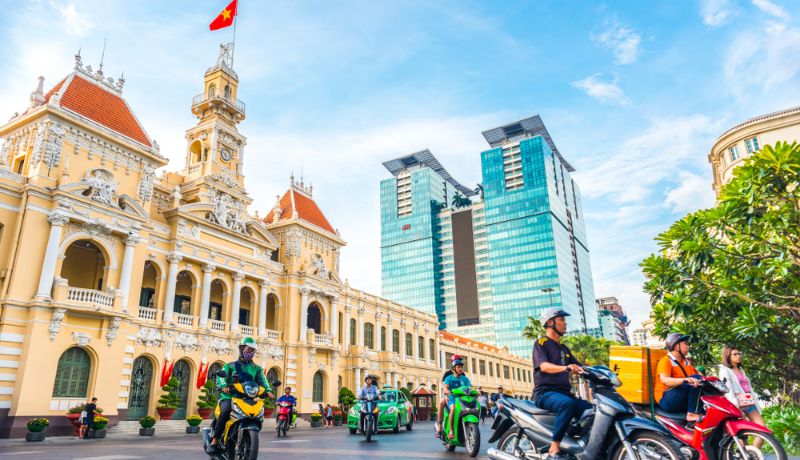
Mekong Delta region
The area at the mouth of the Mekong River, the longest river in Southeast Asia, is called the Mekong Delta. The Mekong Delta region is known as the “Granary of Vietnam” because of its fertile soil, and agriculture is flourishing. Vietnam is the world’s second largest rice exporter, and more than half of Vietnam’s rice production comes from the Mekong Delta region.
The largest city in the Mekong Delta region is Can Tho City, which is directly under the government. Can Tho City faces the Hau Giang, the largest tributary of the Mekong River.
Can Tho City also has an airport and several industrial parks, and is expected to have a high growth rate of economic development in the future because of its infrastructure as well as agriculture.
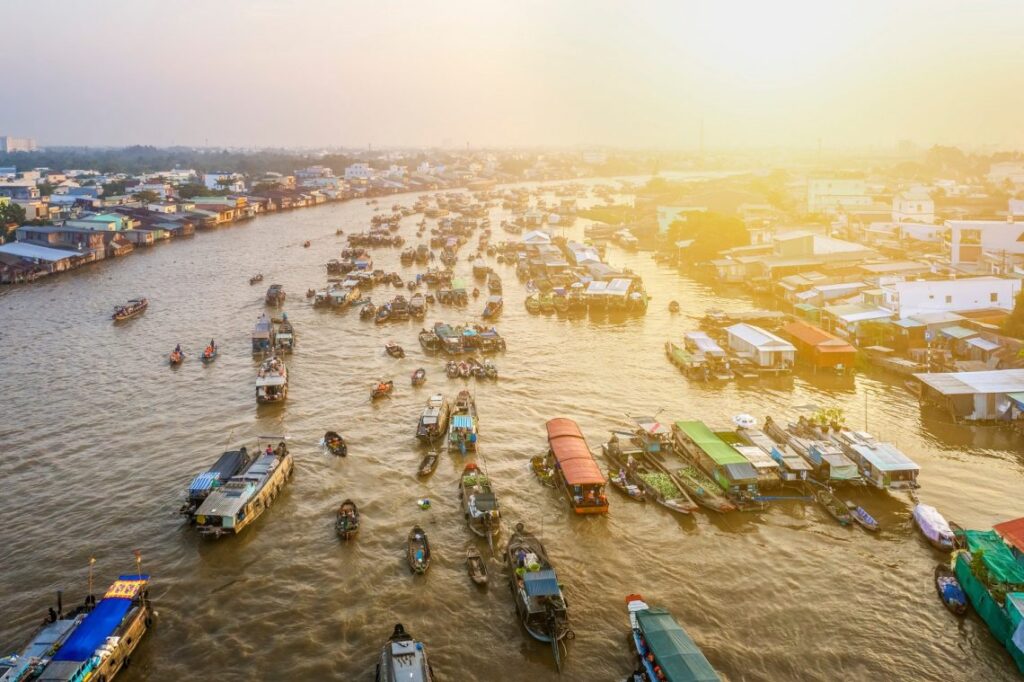
Climate of Vietnam
This chapter introduces the climate of Vietnam. Vietnam is generally associated with the image of “everlasting summer,” which is only half true. South of central Vietnam belongs to the tropical monsoon region, where it is always summer, while the northern part of the country has a subtropical climate with four moderate seasons.
North
Northern Vietnam has four moderate seasons. In Hanoi, the capital city, the average minimum temperature in January is about 13 or 14 degrees Celsius. The average annual temperature is about 24℃. Snowfall can be seen in the northern part of the country. In 2013, 30 cm of snow was recorded in Sapa, a tourist resort in Lao Cai Province.
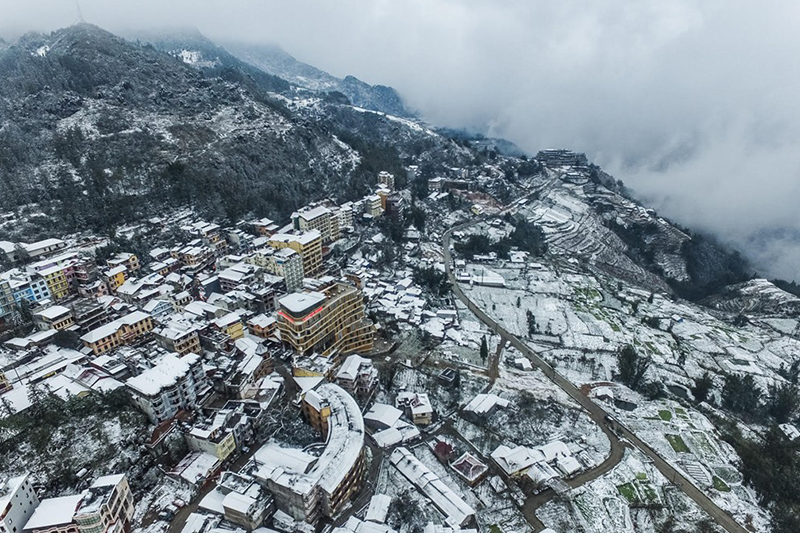
South of Central
South of central Vietnam is what is called “everlasting summer. The season is divided into a rainy “wet season” and a “dry season. The rainy season is from May to October, and the dry season is from November to April. There is no seasonal division by temperature, and the temperature is high throughout the year. In Ho Chi Minh City in the south, the average annual temperature is around 26-28℃.
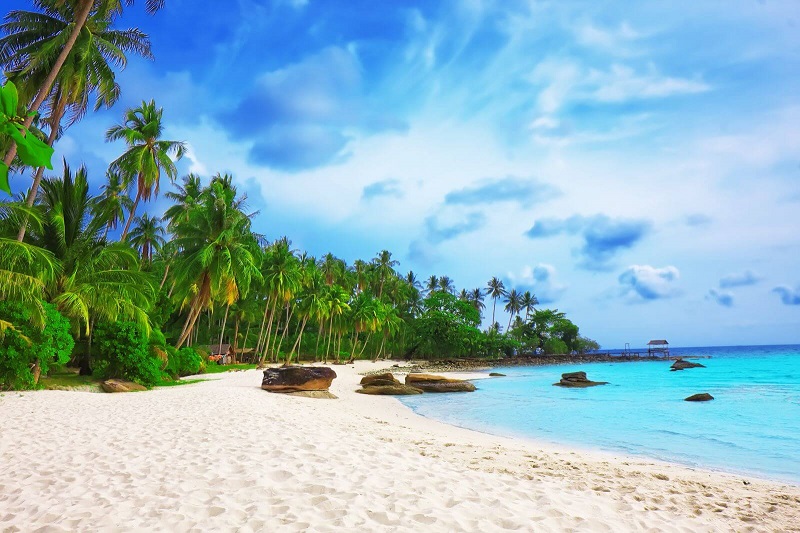
Ethnic Groups in Vietnam
Vietnam is a multi-ethnic country. About 90% of the Vietnamese are ethnic Kinh, but there are as many as 54 officially recognized ethnic groups. In other words, there are 53 ethnic groups in 10% of the population.
Considering that the number of recognized ethnic groups in China, which covers a much larger area than Vietnam, is 55, the number of ethnic groups in Vietnam is quite large. Most ethnic minorities live in the mountainous regions of northern and central Vietnam.
While it is important to protect the livelihood and culture of ethnic minorities, their participation in society has become rare and their incomes relatively low. The Vietnamese government is trying to increase contact with ethnic minorities by, for example, reserving seats for them in the National Assembly.
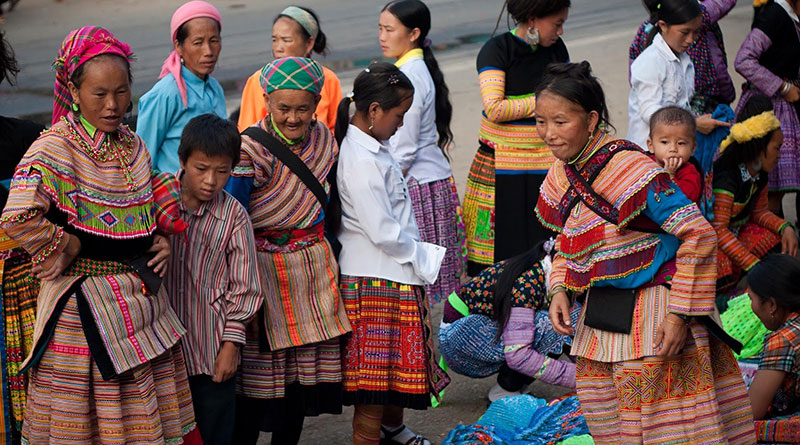
Religion in Vietnam
Various religions are underway in Vietnam. The Vietnamese government recognizes six: Buddhism, Christianity, Islam, and the emerging Vietnamese religions of Cao Dai and Hoa Hao. Of course, there are Vietnamese who follow religions other than these six government-recognized religions.
Buddhism (Mahayana Buddhism) has the largest number of adherents in Vietnam, accounting for about 13% of the total population. It is said that the actual values of the Vietnamese people are a mixture of Buddhism, Confucianism, and Taoism.
The next most common religion is Christianity, with Catholicism and Protestantism together accounting for just under 10% of the population. As a result, there are many churches in Vietnamese towns.
An emerging religion, the Cao Dai religion was born in the 20th century and is characterized by its foundation on the doctrines of the five religions (Buddhism, Confucianism, Taoism, Christianity, and Islam), with an estimated 3 million followers.
The Hoa Hao religion, another emerging religion, was born in the 20th century in the Hoa Hao province of Chadoc. It is said to have about 2 million followers.
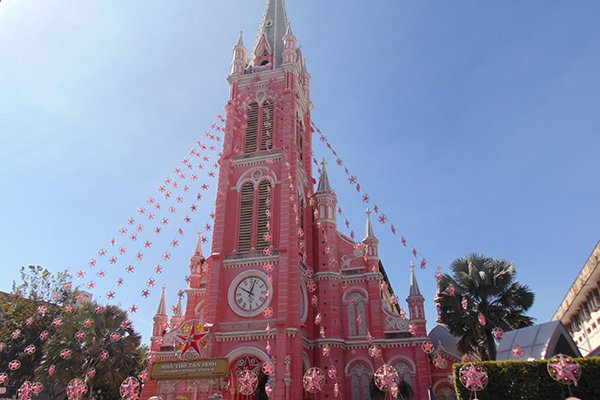
Vietnamese Culture
Vietnam is located next to China and has been strongly influenced by China in terms of culture. For example, the Chinese New Year is called “Spring Festival” in China, and Vietnam also has a custom of celebrating the Chinese New Year as “Tet”.
Of course, there are many aspects that differ from those of China, such as the character of the people and the language. While influenced by China, they have developed their own unique culture.
Vietnamese Character
There is an old saying that has been used to describe the Vietnamese character: “4k. The four are: dexterity, academic-mindedness, short-sightedness, and arrogance.
In other words, a strong sense of filial piety. In fact, there are many Vietnamese working in Japan, and in some cases, 90% of their salaries are sent home.
Myopia means that they tend to pursue short-term profits. On the other hand, it can also be said that many people are dynamic.
The term “women in charge” is a bit of a cliché, but it can be paraphrased as “women are strong. In other words, women are strong. In many cases, women are leaders both at work and at home.
In terms of work, one of the most common problems is that people are somewhat loose with time. Being a little late is normal in Vietnam, so you need to be aware of this when doing business in Vietnam.
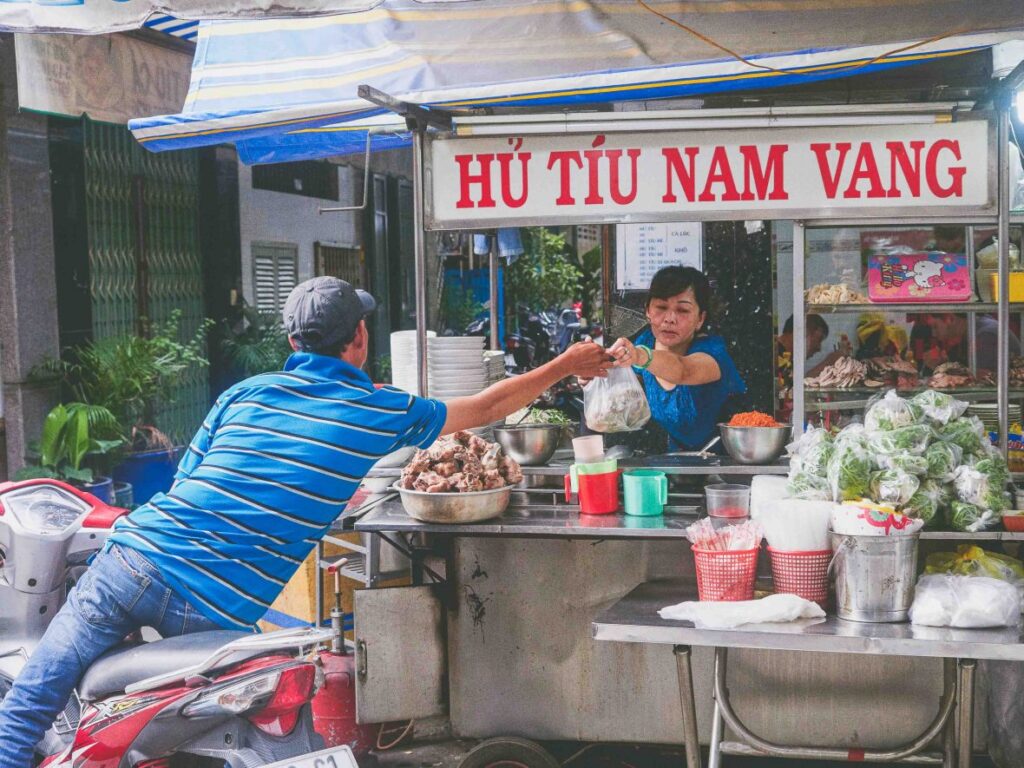
Vietnamese
Vietnamese is spoken in Vietnam. Characteristically, first of all, its grammatical rules are different from those of Japanese. Japanese is a so-called SOV language, while Vietnamese is an SVO language. If you want to say “I like dogs,” the word order in Vietnamese is “I like dogs.
Another characteristic of Vietnamese is tone. The tone is the inflection of the voice, and the meaning of a word can vary greatly depending on the difference in tone. When describing a word, tone markers are used.
For example, “cho” in Vietnamese means “give,” “chó” means “dog,” “chờ” means “wait,” and “chợ” means “market.
Although Vietnamese is now written in the alphabet, the language was originally written in Chinese characters, and the alphabet was invented by Christian Jesuit missionaries around the 17th century for the purpose of proselytizing in Vietnam.
Therefore, it is said that 70% of the vocabulary of the Vietnamese language is derived from the Chinese language. In addition, the Vietnamese language is also influenced by the Japanese language. Kanji, which was introduced to Japan from China, developed in a unique way in Japan, which was then introduced to China, which in turn was introduced to Vietnam.
As a result, there are some very similar words in Vietnamese and Japanese. For example,
| Japanese | Vietnamese |
| 同意(agreement) | Đồng ý(ドンイー) |
| 結果(result) | kết quả(ケックァー) |
| 大使館(Embassy) | đại sứ quán(ダイスーカン) |
| 中国(china) | Trung Quốc(チュンコック) |
These include.
Vietnamese Traditional Costumes
Vietnam has a traditional costume called ao dài. The Vietnamese word is “Áo dài,” which directly translates to “long jacket. It comes in a variety of colors and has a beautiful silhouette that follows the lines of the body. Since the ao dài is formal attire, rather than everyday wear, it is usually worn at events, but some service industries have designated it as a uniform.
They are often seen near airlines, hotels, and tourist attractions that come into contact with tourists in the United States. In addition, they are often used as school uniforms.
Ao dai is often associated with women, but it is also available for men.
Historically, the prototype of the ao dai was already seen in BC. It was not until the 18th century that it approached its present form.
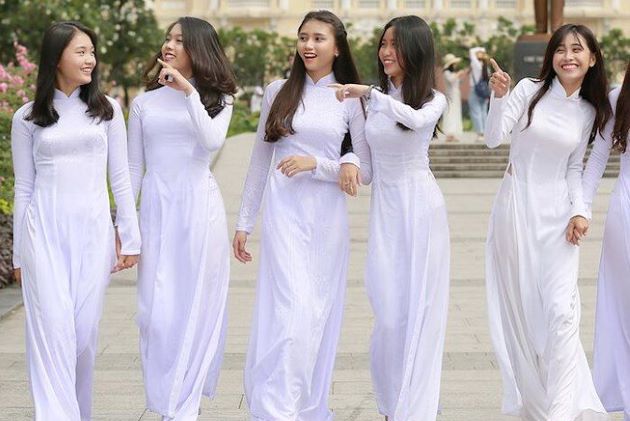
Vietnamese Traditional Cuisine
Vietnam has its own uniquely developed Vietnamese cuisine. In Japan, it is classified as so-called “ethnic cuisine. The most well-known examples in Japan are “báinh mì” and “pho”.
The “báinh mì” is a so-called “Vietnamese sandwich” consisting of a baguette coated with a meat patty and meat or vegetables sandwiched in between. In Vietnam, it is often seen sold at roadside stalls.
Pho is a dish similar to ramen or udon noodles, featuring noodles made of rice flour. There are two main types of pho: beef-based “pho bo” and chicken-based “pho ga. Pho is often added with green onions, pak choi, and lime.
Pho can be said to be the soul food of Vietnam, but it is not a home-cooked dish, and is basically eaten at restaurants.
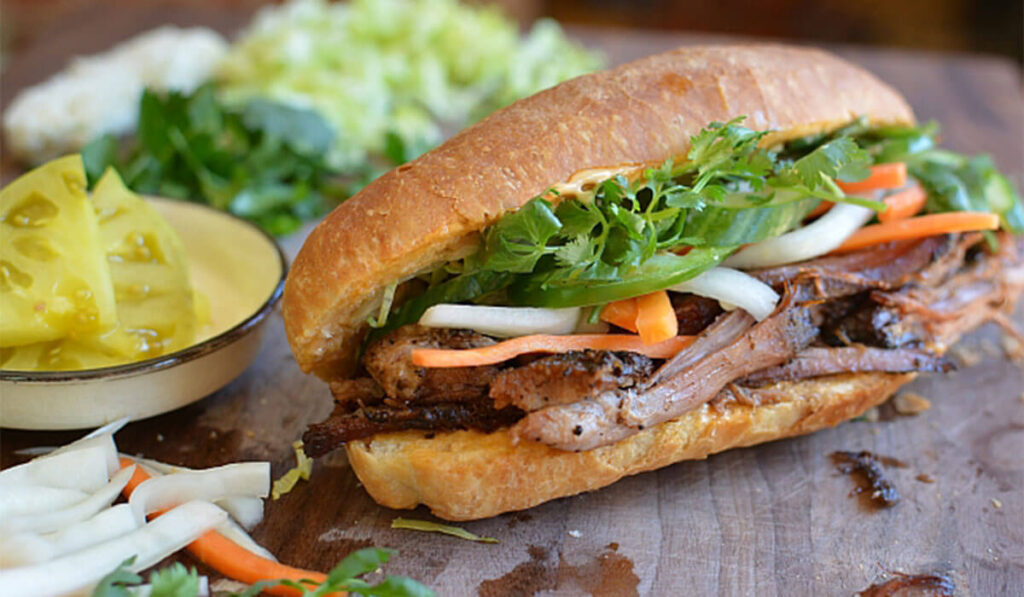
Vietnamese Economics
Vietnam has developed as a manufacturing base for foreign companies. China has been called the “world’s factory” and many companies have manufacturing bases there, but various risks such as rising labor costs and trade friction between the U.S. and China have been observed for some time. This has led to the spread of the “China plus one” concept, in which manufacturing bases are moved to countries other than China, and Vietnam has become a particularly popular destination. Vietnam was particularly popular as a destination because of its abundant young labor force and lower labor costs than China.
The Vietnamese economy, which has thus developed as a manufacturing base for many foreign companies, has also begun to attract attention as a consumer market in recent years. With economic development, the incomes of the Vietnamese people have increased, and the so-called wealthy and middle classes have expanded. As a result, more expensive products can now be sold than before, and foreign companies are once again paying attention to Vietnam.

Overview
Vietnam’s GDP has continued to grow positively every year and has increased about 9 times in the past 20 years. In the last 10 years, it has been growing at more than plus 5% annually, up to a maximum of 7%, and in 2020, while the global coronavirus disaster caused negative GDP trends in many countries, Vietnam was able to contain the spread of the coronavirus and achieve positive growth of 2.9%.
In the first half of 2021, Vietnam’s GDP grew at a high rate of 5.6%, but the spread of infection since the summer with the arrival of the new coronadelta strain ultimately led to a final growth rate of 2.6%, positive but slightly lower than the previous year.
However, a quarterly look at GDP trends within 2021 shows a positive 4.7% in the first quarter, a positive 6.7% in the second, a large drop to -6% in the third, and a significant V-shaped recovery to a positive 5.2% in the fourth, so the Vietnamese economy is likely to have a strong growth potential in 2022 as well. Therefore, Vietnam’s economy is likely to grow in 2022 as well.
In 2021, the service sector accounted for about 41% of Vietnam’s GDP, manufacturing and construction about 38%, agriculture, forestry, and fisheries about 12%, and product taxes about 9%. The trend over the past few years has been for the agriculture, forestry, and fisheries industry and product taxes to fall in share, while the manufacturing and construction industry and the service sector have risen in share.
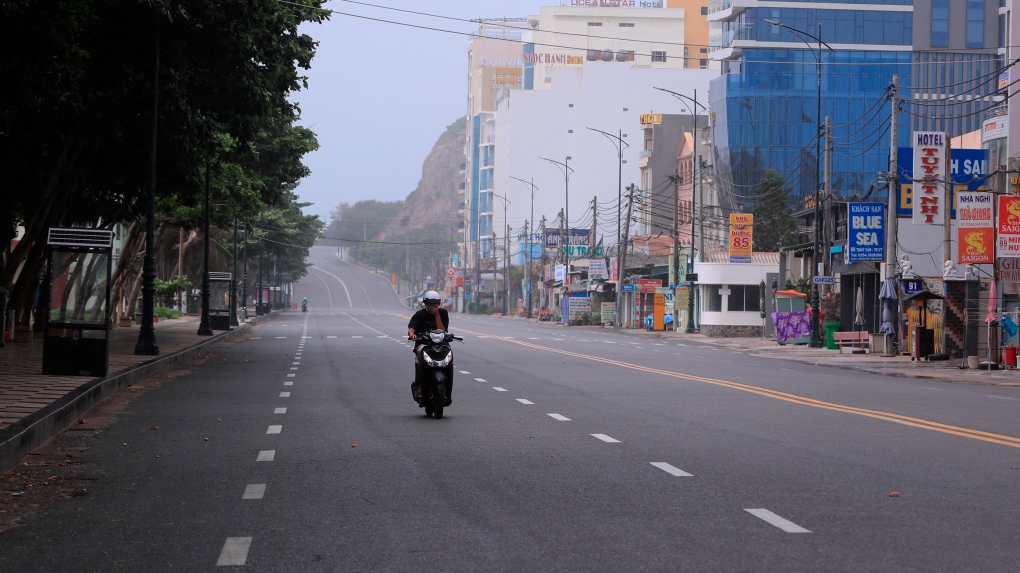
Average Annual Income of Vietnamese
According to data from the General Department of Statistics of Vietnam, the average annual income in the country in 2019 is 410,000 yen; as of 2010, it was 184,000 yen, so it has risen about 2.2 times in 10 years.
The industry with the highest average annual salary is “Finance, Banking and Insurance,” at ¥553,000. As mentioned earlier, the average income also varies greatly by region. It is higher in and around large cities such as Hanoi and Ho Chi Minh City, and conversely lower in mountainous areas.
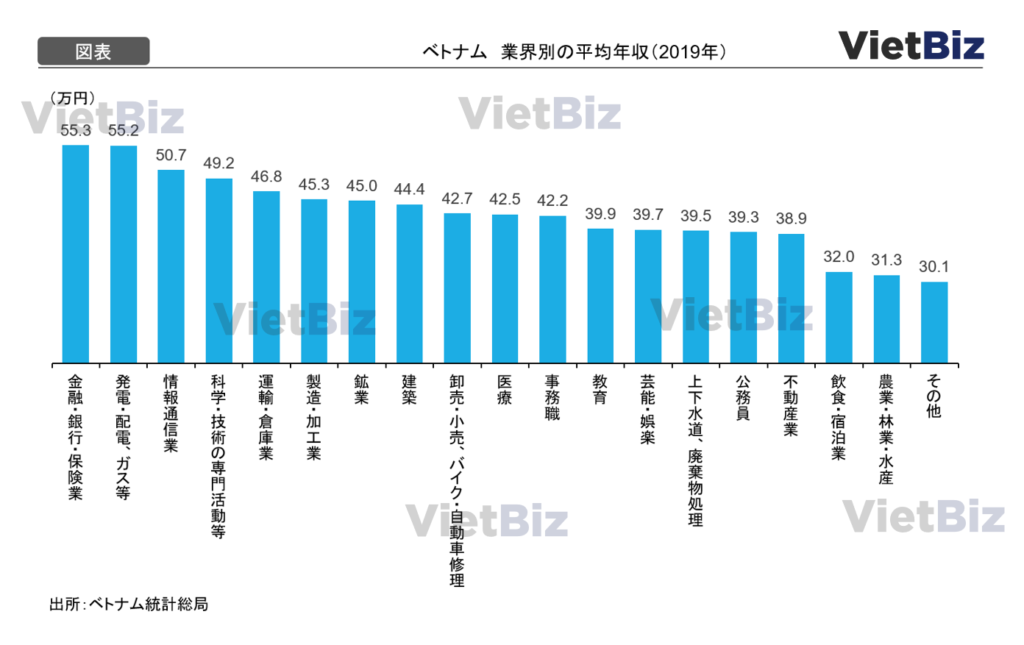
Vietnam Trade Trends
Trade is an essential element in examining Vietnam’s economic growth. As mentioned above, Vietnam has grown as a manufacturing base for foreign-invested companies, which manufacture products and export them to the rest of the world.
Vietnam’s trade has developed rapidly mainly in the last decade or so. Especially since 2016, the country has continued to record trade surpluses without interruption, but at the end of August 2021, it recorded a trade deficit for the first time in many years. However, for the whole of 2021, a surplus was recorded, with both imports and exports increasing.
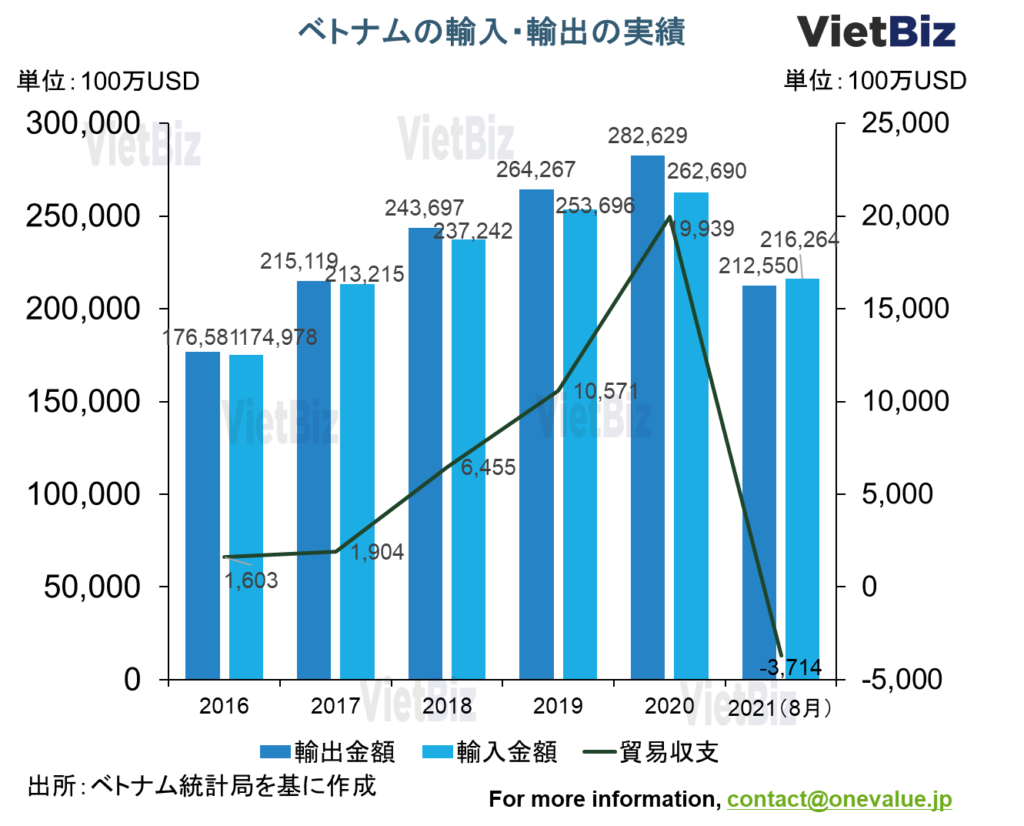
Partner Countries and Products Handled
As Vietnam’s main trading partners, in terms of both exports and imports, China has the largest share at 24.8%, followed by the U.S. at 16.6%, South Korea at 11.7%, ASEAN at 10.5%, the EU at 8.5%, Japan at 6.4%, and other countries at 21.5%.
The most common major export items are cell phones and their components, followed by computers and other electronic products and their components, and then machinery and equipment. Although Vietnam is very rich in machinery and electronic products, clothing and agricultural, forestry, and fishery products are also major export items for the country.
The largest import item is computers and other electronic products and their components, followed by machinery and equipment and their components, and cell phones and their components in third place. Although these items are exactly the same as export items, since these trade items include their respective components, a structure of “importing components, assembling them, and exporting them as products” is conceivable.
Trends of Japanese Companies Expanding into Vietnam
Japanese companies have long been prominent in Vietnam. There are three Japanese Chambers of Commerce in Vietnam, located in Hanoi, Da Nang, and Ho Chi Minh City.
As of January 2022, 789 companies are registered with the Chamber of Commerce in Hanoi, 1,060 in Ho Chi Minh City, and 130 in Da Nang (as of 2019), for a total of 1,939 companies. Of course, some Japanese companies are not registered with these three Chambers of Commerce, so this is the minimum number of Japanese companies that have entered the market. Compared to other ASEAN countries, the number of Japanese companies in Vietnam is one of the highest.
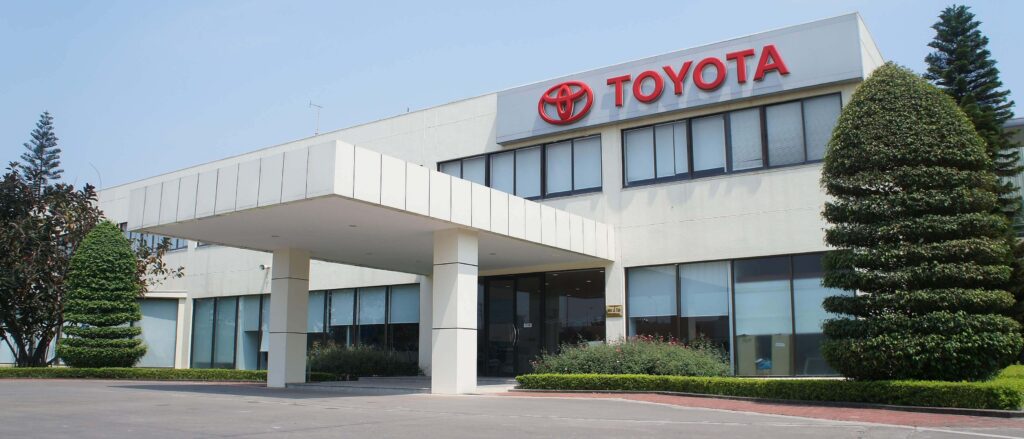
Examples of Japanese Companies That Have Expanded into Vietnam
The pioneers of Japanese companies entering Vietnam in the 1990s were automobile and motorcycle manufacturers such as TOYOTA, YAMAHA, and HONDA. In particular, since there are many motorcycles in Vietnam, YAMAHA and HONDA are names that are often seen around town.
They were followed by major consumer electronics, pharmaceutical, and food manufacturers. Electronics manufacturers such as Sharp, Panasonic, Sony, and Toshiba are widely known in Vietnam.
In the area of pharmaceuticals, Earth Chemicals (insecticide), Rohto (eye drops), and Hisamitsu Pharmaceutical (known for its “Salonpas” compresses) are representative examples. Hisamitsu’s Salonpas, in particular, is so well known that it has become synonymous with the poultice itself.
In the food industry, Ace Co., whose main product is instant ramen, is a pioneer in the Vietnamese market. ace co. entered the market in the early 1990s and thoroughly localized its products. a few years after its entry, it launched “Hao Hao” ramen, which has sold more than 30 billion servings in Vietnam and has become the most sold It became the best-selling instant noodle in Vietnam.
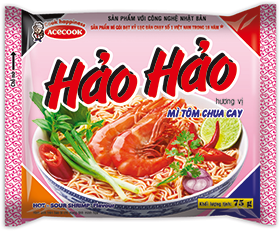
Thus, many of the Japanese firms that entered Vietnam early on are manufacturers and manufacturers.
Future Prospects
The number of Japanese companies entering Vietnam is expected to continue to increase. M&A is one of the ways to enter the market, and the amount of M&A transactions in Vietnam in 2020 was the largest ever recorded despite the Corona disaster. Compared to the previous year, the value of M&A transactions in Vietnam was approximately four times that of the previous year.
In the past, Vietnam has developed as a manufacturing base, so most of the expansion has been in the manufacturing sector, but in recent years, the retail and financial sectors have been increasingly expanding into the country.
Future areas of focus include real estate, logistics, renewable energy, and retail.
Why Japanese Companies Choose Vietnam
There are two main reasons why Japanese companies are expanding into Vietnam.
The first is that Japan’s domestic market is already shrinking: as of 2021, the average age in Japan is 48.4 years old, and it is expected to continue to rise. The decline in domestic demand is an inevitable consequence. Another point is that the “Japanese brand” has already been established through the activities of Japanese companies that have already entered the market.
The second reason is that M&A is no longer as difficult for Japanese companies as it used to be, and many services have emerged to facilitate M&A, such as consulting and matching portal sites that support M&A. The spread of online conferencing, for example, is also a tailwind.
Companies, especially those with a lot of surplus funds, are aggressively investing overseas, aiming to earn capital gains and income gains.
Vietnamese Politics
Vietnam is a one-party communist political system, and even the name of the country, “Socialist Republic of Vietnam,” proclaims socialism. Many people may wonder why there is a gap between the rich and the poor.
The ideal is to “achieve an equal and just society.” After the Vietnam War of Independence, Vietnam implemented a socialist planned economy in pursuit of this ideal. However, it gradually reached a dead end, and after the implementation of the Doi Moi policy in 1987, a market economy was introduced.
The emphasis was on the economic development of the country as a whole rather than on equality among individuals, and the economic system changed to one in which those who could become rich became richer. The Communist Party of Vietnam claims that socialism in Vietnam is a terminal achievement, and a socialist-oriented market economy is being implemented as part of the process of achieving it. As a result, there is a gap between the rich and the poor, as in capitalist countries.
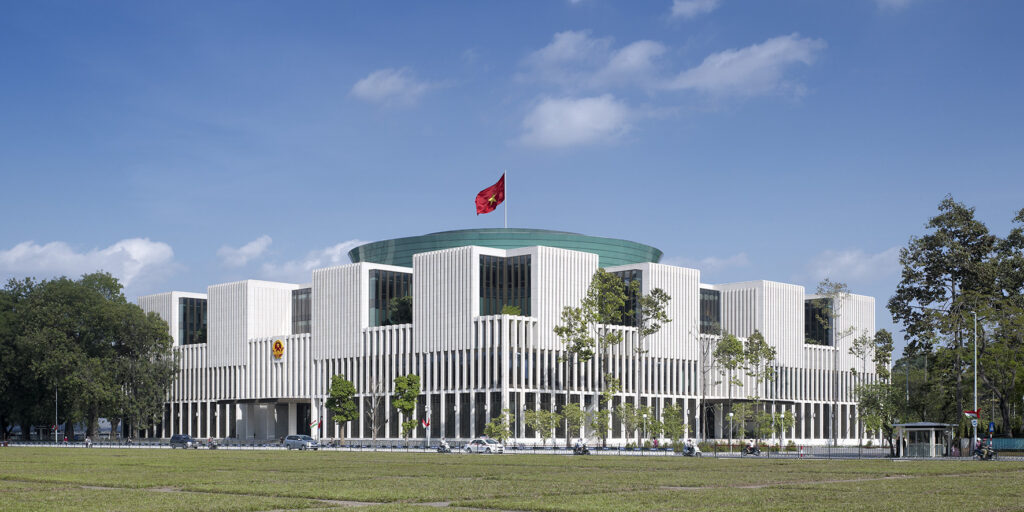
Communist Party of Vietnam Regime
Chapter 1 of the Japanese Constitution provides for the Emperor, while Chapter 1 of the Vietnamese Constitution provides for the Communist Party. In Vietnam, all political parties other than the Communist Party are unconstitutional.
The Vietnamese Communist Party uses a collective leadership system and has about 5.1 million party members. On the other hand, it is characterized by the fact that there is no clear top leader as in China and North Korea.
The Communist Party has established four political offices (Party Secretary General, State President, Prime Minister, and Speaker of the National Assembly). These four are in effect the top leaders of the Communist Party, and are elected based on a balance of ideology, career, and hometown. In a manner of speaking, there is a pecking order: Party General Secretary, State President, Prime Minister, and Speaker of the National Assembly. The Party General Secretary is considered the supreme leader of Vietnam, but he does not have dictatorial power.
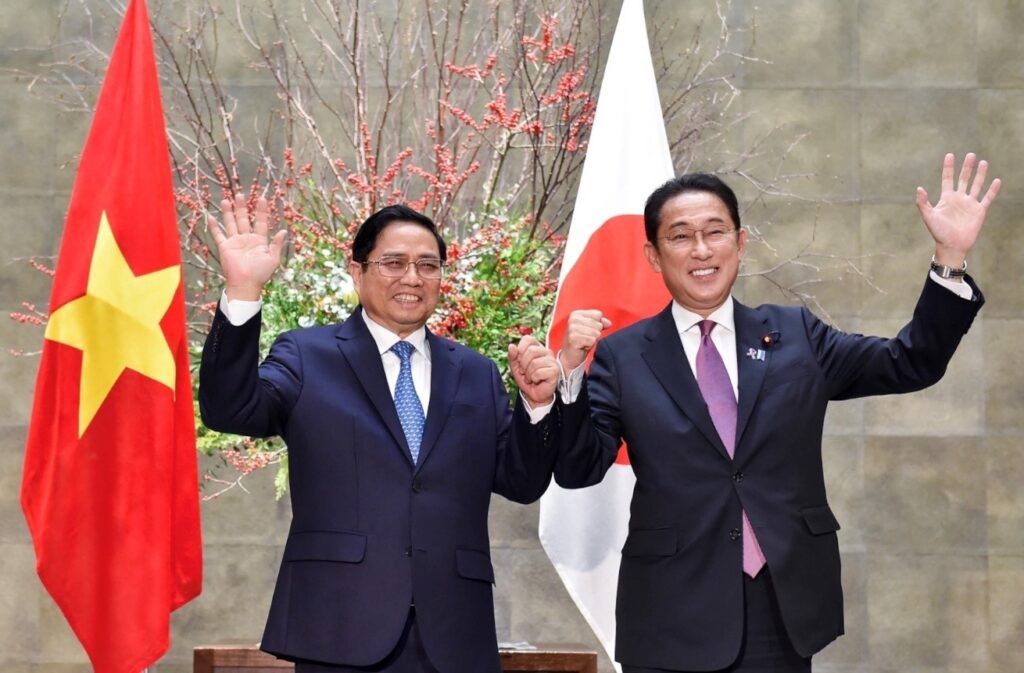
Conclusion
This report provides a comprehensive introduction to the fundamentals of the country of Vietnam.
First, Vietnam’s population is growing steadily and is said to overtake that of Japan by the 2040s. Structurally, the population is dominated by young people, but the proportion of elderly people is gradually beginning to increase.
Vietnam can be divided into eight major geographical divisions. Hanoi, the capital, is located in the Red River Delta region in the north, Ho Chi Minh City, the largest economic city in Vietnam, is in the southeast, and Danang, the third largest city in Vietnam, is in the central region, a transit point between the north and south. Most of Vietnam’s 53 ethnic minorities live in the mountainous areas of north-central Vietnam.
The climate of Vietnam is divided into two major regions: the northern part and the central and southern parts. Northern Vietnam has a subtropical climate with four moderate seasons and snowfall. On the other hand, the central and southern regions have a tropical monsoon climate, with high temperatures all year round and a so-called “everlasting summer. The climate is divided into two seasons: the rainy season and the dry season.
Culturally, Vietnam is strongly influenced by China and has the largest number of Buddhists in terms of religion. The Vietnamese language was originally written in Chinese characters, and 70% of the vocabulary is of Chinese origin, with some similarities to the Japanese language.
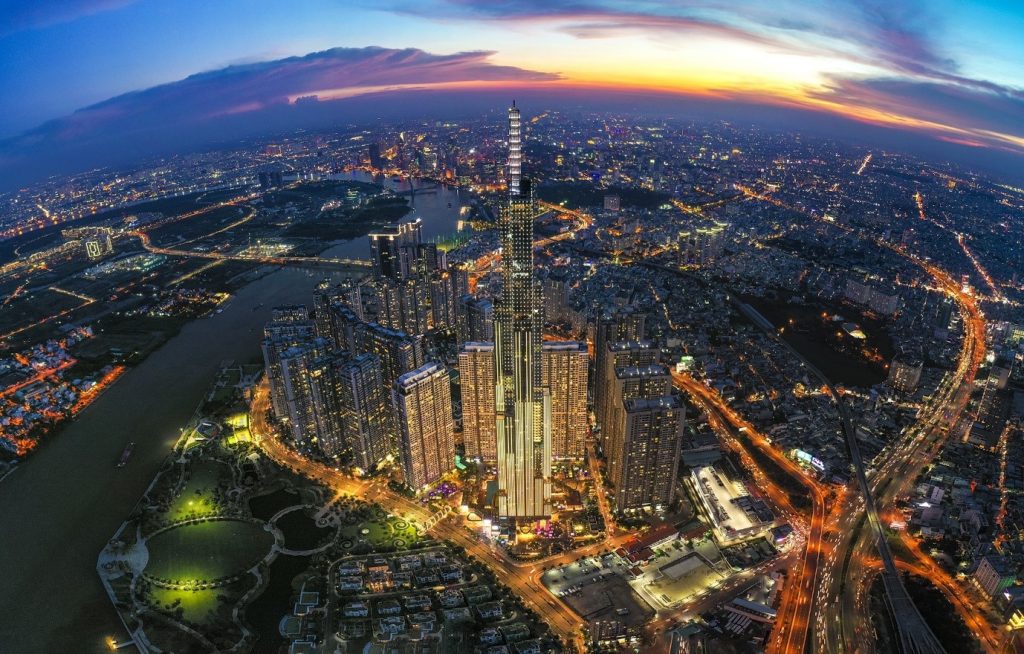
Vietnam’s economy has developed as a manufacturing base for foreign-funded companies, but in recent years its potential as a consumer market has been attracting attention. This is due to the fact that national income has increased with economic development, and the wealthy and middle classes have expanded.
Vietnam’s GDP has continued to grow positively every year and has increased about 9 times in 20 years; in 2021, the service sector accounted for about 41% of Vietnam’s GDP, manufacturing and construction about 38%, agriculture, forestry, and fisheries about 12%, and product taxes about 9%. As a trend, the ratios of the manufacturing/construction and service sectors are increasing.
Trade is a very important factor for Vietnam. Vietnam mainly handles industrial products such as cell phones, electronic devices, and machinery and equipment, and is considered to import parts, assemble them, and export the products in many cases. The main trading countries are China and the United States.
Japanese companies have long been prominent in Vietnam, with at least 1,939 companies having set up operations in the country. Until now, the majority of these companies have been in the manufacturing sector, such as automobiles/motorbikes, electronics, pharmaceuticals, and the food sector, but in the future, more companies are expected to enter the real estate, logistics, renewable energy, and retail sectors.
Vietnam is a socialist country with a one-party communist government. On the other hand, the gap between the rich and the poor exists because a market economy has been introduced through the Doi Moi policy. The Vietnamese Communist Party is characterized by the fact that individual power is not as strong as in China or North Korea. The Vietnamese Communist Party has four top leaders.
【関連記事】ベトナムの経済・近況については、こちらの記事も合わせてご覧ください。
ベトナム市場調査レポート一覧はこちらからもご覧頂けます。

ベトナム市場の情報収集を支援します
ベトナム市場での情報収集にお困りの方は多くいらっしゃるのではないでしょうか。
VietBizは日本企業の海外事業・ベトナム事業担当者向けに市場調査、現地パートナー探索、ビジネスマッチング、販路開拓、M&A・合弁支援サービスを提供しています。
ベトナム特化の経営コンサルティング会社、ONE-VALUE株式会社はベトナム事業に関するご相談を随時無料でこちらから受け付けております。
